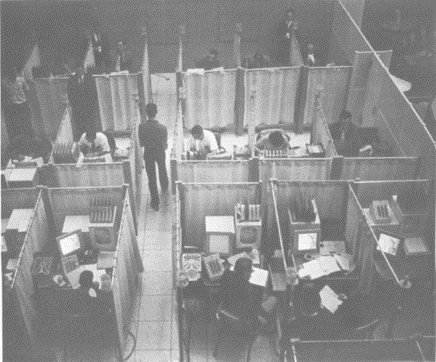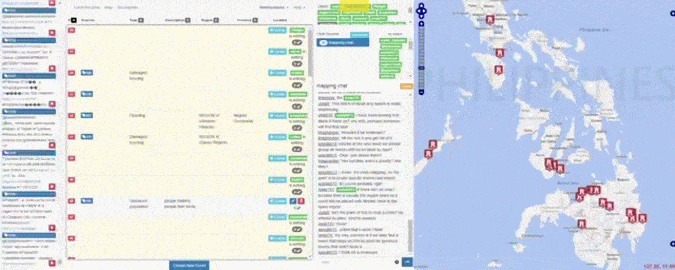Introduction¶
Since the 1950s, social scientists of all disciplines have been studying people in “behavioral labs” at universities. These labs typically involve cramming a group of people into a room for an hour or so and asking them to do something:

The lab is quite a useful tool in that it offers a great degree of control in doing experiments, and hence the ability to draw correct, causal conclusions. But there are clear limitations of using such an environment to study practically all of human behavior:
- it’s a pretty artificial environment
- the setup generally supports only simple tasks
- subjects are very homogeneous university undergraduates
- we can only take a limited number of people and keep them there for a short amount of time
- lab experiments are expensive, difficult to set up, and hard to replicate
Why the Virtual Lab?¶
The “Virtual Lab” refers to using software-controlled experiments with Internet participants to overcome many of the limitations of brick-and-mortar lab experiments. We can now study more complex tasks and set up interactions that happen over longer periods of time or among larger numbers of people. This allows us to design behavioral experiments that would have been very hard to do in the past.

What is TurkServer?¶
TurkServer is a platform for building software-controlled, web-based behavioral experiments using participants from the Internet. We can now study more complex tasks and set up interactions that happen over longer periods of time or among larger numbers of people. This allows us to design more expansive and realistic behavioral experiments.
By taking advantage of the movement toward the web as an all-purpose application platform, and providing a common system on which to build software-based behavioral experiments, TurkServer allows for:
- Easier real-time programming using the Meteor web app framework
- Building synchronous experiments and studying group interaction
- A live web-based experimenter console showing all connected participants
- The ability to create one-way mirrors to view behavior in real time
This means we can go from very artificial environments to studying realistic, complex tasks such as teamwork and collective intelligence:
Sharing and Replication¶
One significant annoyance of doing experiments is that they’re a lot of work, yet this work is often redundant: it is either not shared or involves reinventing the wheel. So, other than just supporting more advanced experimental designs, another goal of TurkServer is to lower the barrier to both producing and sharing experimental research.
We can do this by making everything open-source software: not only is the core platform open-source, but experiments built on it are as well. This means that researchers can now share not only data, but entire experimental protocols. For example, check out the code for the teamwork experiment above.
In this way, building off someone else’s experiment means you don’t have to implement it from scratch: just grab their code and use it!
Next Steps¶
Ready to jump in? Check out the quick start, a basic (but fully functional) tutorial app, or read up on how to think about designing experiments with TurkServer.
